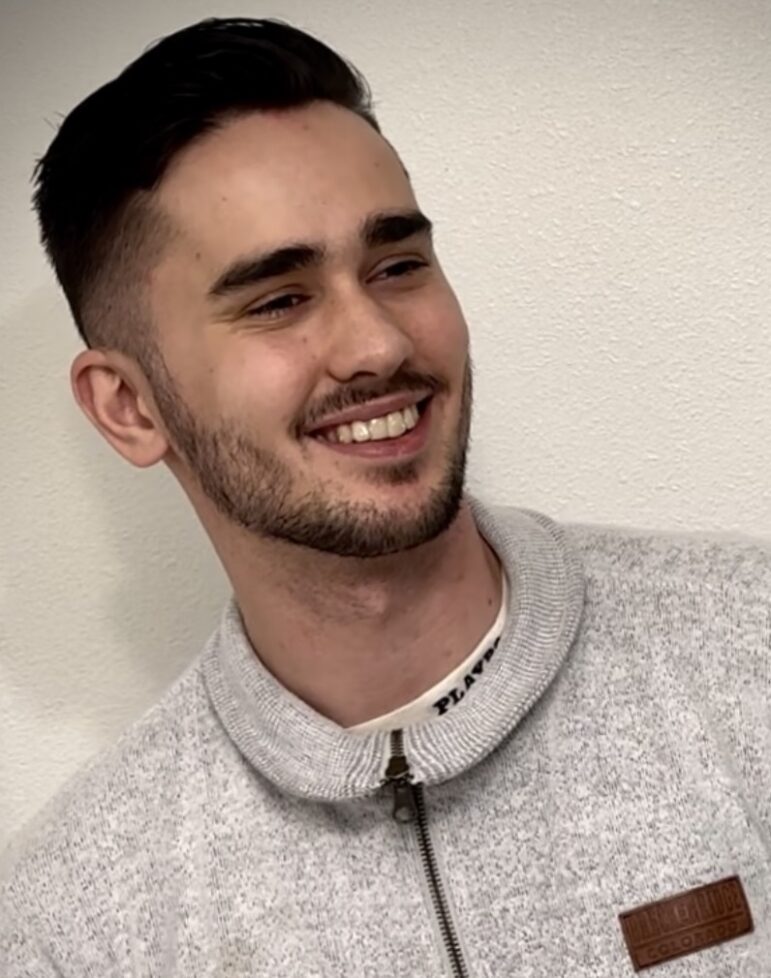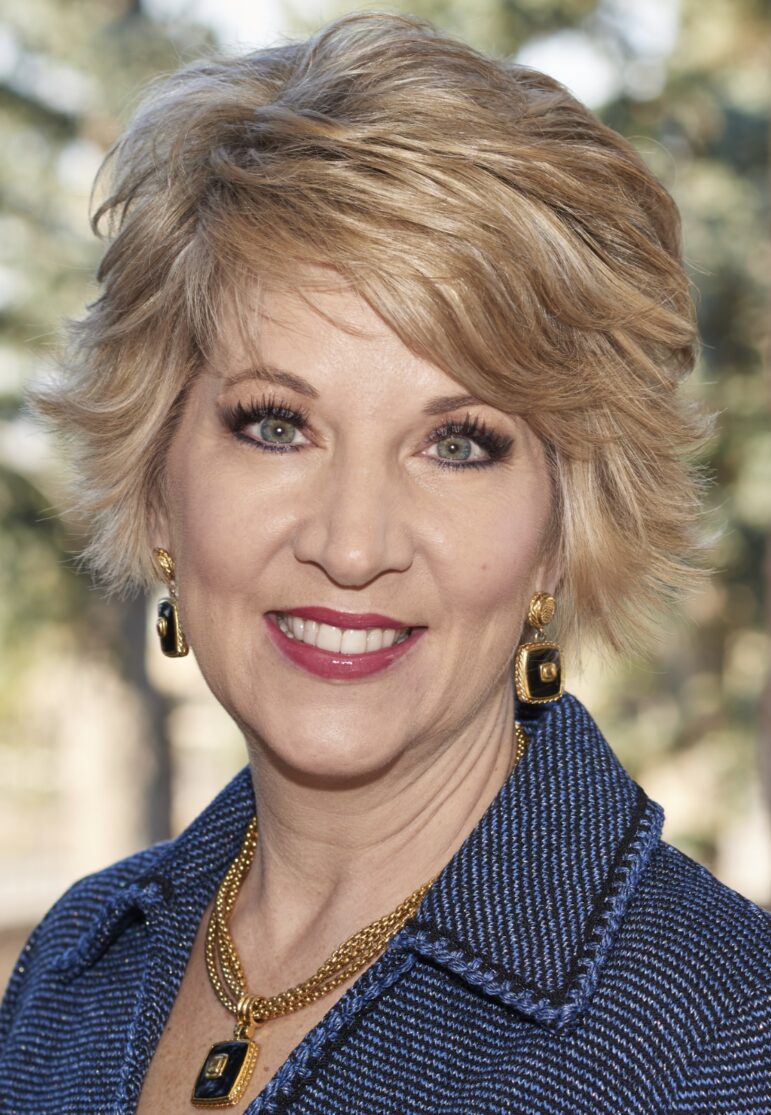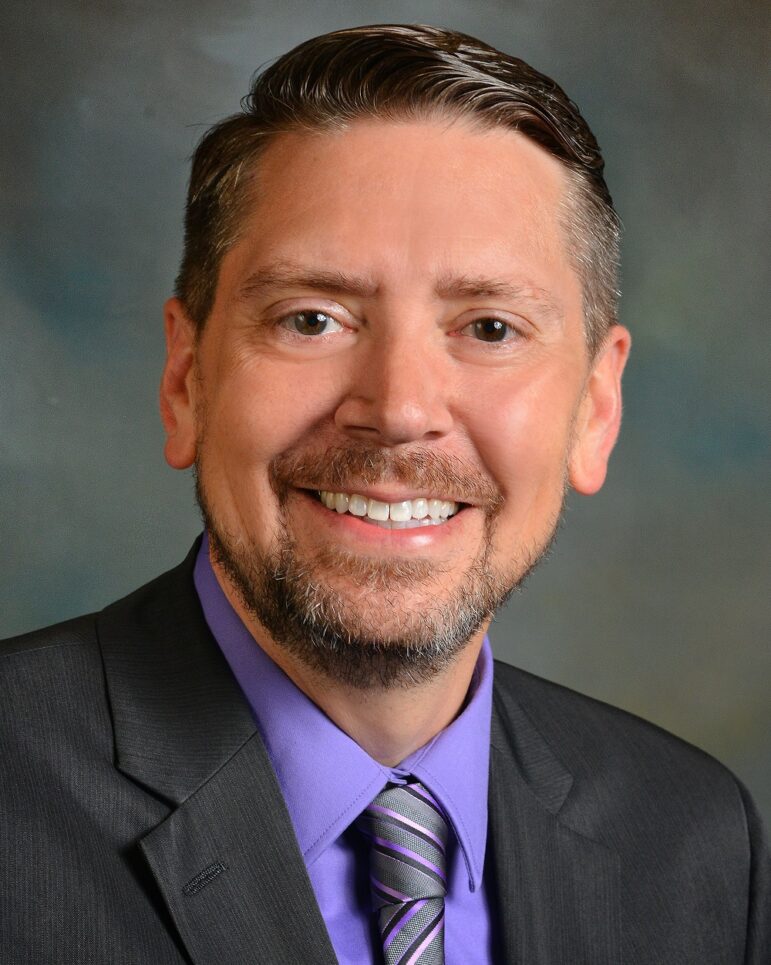In his junior year of high school, an older boyfriend of Ethan Andrew’s sister introduced him to high-potency cannabis. The Colorado high schooler started regularly experimenting with that drug, legalized for adult Coloradans’ recreational use in 2012. He relied on it to sleep and get through his day. He didn’t expect its adverse effects on him.
“It started to get scary. I started to hear things, to hallucinate,” said Andrew, who, with some difficulty, eventually weaned himself off of that unlawfully obtained cannabis.

Courtesy of Ethan Andrew
Ethan Andrew
Minors’ illegal use of cannabis products has become a concern in Colorado and elsewhere in what, according to the Council of State Governments’ February 2023 count, are 20 states that legalized recreational marijuana and 20 states that lessened penalties for illegal marijuana possession. As legalization has spread, some law enforcement and other authorities, parents and school officials have bemoaned the availability of cannabis that’s sold legally to adults and then passed illegally to minors.
In New York City, for example, Mayor Eric Adams has noted that minors somehow are accessing products, perhaps from some of what he says are an estimated 1,400-plus unlicensed cannabis vendors throughout five boroughs; he recently promised to crack down on scofflaw vendors. In 2021, New York became the 15th state to legalize recreational marijuana, with corner stores and street vendors among venues that can legally sell cannabis to those who are at least 21 years old.
Ethan Andrew’s dealer in Colorado bought his supply legally from a dispensary, Andrew said: “It kind of felt safe. We thought it was just weed.”
But cannabis’ comparatively higher concentrations of THC, or tetrahydrocannabinol, the high-inducing psychoactive ingredient, were destructive for Andrew. His senior year, missing school more often than he attended, he got an F in every class except the one he needed to graduate. A few weeks after graduating, things got even worse.
“It almost felt like a switch in my head,” he said, recalling days when he hallucinated or was too frazzled to get off the couch. “I went full psychotic.”
Today’s higher-potency cannabis isn't yesteryear’s pot
There are mixed data on cannabis use among the young amid their increased access to the substance. Use among adolescents has declined since its peak in 1997, according to the University of Michigan’s federally funded Monitoring the Future survey of 50,000 high schoolers, released earlier this year. More than 30% of eighth, 10th and 12th graders reported using marijuana in 1997. That figure fell to 17.9% in 2021 before rising to 19.4% last year. Similarly, during the same period, alcohol use among the same group dropped to a low of 30% in 2021, then rose to 32.2% last year.

Courtesy of Linda Richter
Linda Richter
However, a Oregon Health & Science University study concluded there was a 245% rise between 2000 and 2020 in the number of marijuana-related calls to poison control centers regarding 6- to 18-year-olds. The study attributes much of that increase to young children eating cannabis gummies and other edibles, worrying parents who wonder if high-potency marijuana will harm more teens in the coming years.
What appears more certain is that levels of THC in cannabis products also have risen in recent years, according to an analysis, published in 2020 in the Addiction journal, of 80,000 cannabis samples collected in the United States and Europe.
“The adults around the kids need to become more aware of this and not assume it was the same as it was in the ’70s, ’80s and ’90s,” said Linda Richter, vice president for prevention research and analysis at the Partnership to End Addiction.
A self-described “wake-and-baker” who smoked pot soon after rising each morning in her youth, Bronwen Skinner realized how different that strain of marijuana is from today’s products when her son Austin developed cannabis misuse disorder, rendering the then-Colorado high schooler unable to stop using marijuana, despite its health and social effects.
“My son started hearing from teachers and government people doing it and other parents and church members that marijuana was perfectly safe,” said his mother, who now lives in Texas. “He came home one day and said, ‘My teacher said marijuana is fine and you don’t know what you’re talking about.’”
About 30% of marijuana users develop the disorder, marked by excessive and risky use that can affect relationships, friendships, work and school, according to the Centers for Disease Control and Prevention.
“We spent a lot of time and effort getting that under control,” Skinner said.
Some cannabis use self-medicates youth depression, anxiety
Although research suggests that drug and alcohol abuse among adolescents declined during the pandemic, Seattle pediatrician Dr. Jasmin Zavala said she’s seen an increase in teens self-medicating with cannabis for depression and anxiety.

Courtesy of Dr. Jasmin Zavala
Dr. Jasmin Zavala
“If you come across an adolescent who is using marijuana, it’s important to know why,” she said. “What conversations are parents having with their kids at home?”
Zavala suggested parents check the American Academy of Pediatrics’ HealthyChildren.org for tips on the prevention and symptoms of cannabis use and on identifying mental health issues that might arise from that misuse. It can be difficult for parents of teenagers to understand how cannabis use affects behavior, she said.
“The hard part is during the teenage years … Failure to concentrate or mood swings are things people might think are typical teenage behavior,” she said. “But some of those would be red flags.”
Laura Stack’s son, Johnny, was a teenager when his native Colorado legalized cannabis.
“He was 14 when it came into the dispensaries, and that’s when he went to his first party where there was marijuana. That was the beginning of a very difficult five years,” Stack said, referring to her extended, losing battle to keep him from falling deeper into his cannabis habit.
Johnny mostly got cannabis from older peers who bought it legally, his mother said, but eventually obtained a medical cannabis card when he turned 18 and bought it himself. His mother said Johnny should not have qualified for a medical card, which she said he used to sell cannabis to underage use.

Courtesy of Laura Stack
Laura Stack
“We couldn’t even find out which doctor gave our perfectly healthy son a medical card,” Stack said. “We would have sued him or her for sure.”
As his use of high-potency cannabis increased, Johnny became psychotic and committed suicide at 19.
Johnny’s Ambassadors is a nonprofit founded by his mom, who now teaches parents and youth how to avoid the problems her son developed.
Adolescents who are predisposed to schizophrenia and other mental illnesses often self-medicate with cannabis, said Dr. Michael Birnbaum, the psychiatrist who directs an early treatment program at Northwell Health, serving patients in New York City and neighboring Long Island and Westchester County. But it’s unlikely that psychosis is caused solely by cannabis, he added. And the teenage years are when mental illnesses, including some psychotic breaks that are marked by a lack of reality, often begin to reveal themselves.
“Many people experiment when they’re young adults or adolescents, which is when psychosis often presents,” Birnbaum said. “It’s never just one joint — ever” that triggers psychosis.
Legalization advocates: Legal dispensaries aren’t the problem
Legalization advocates argue that recent declines in adolescent cannabis use, which some research has found, and marijuana decriminalization happened in tandem. Legal dispensaries, they contend, have done a good job preventing purchases by minors.
“[S]tates’ real-world experience with marijuana legalization affirms that these policies can be implemented in a way that provides regulated access for adults while simultaneously limiting youth access and misuse,” the legalization advocacy group NORML wrote this year.

Courtesy of Geoff Heckman
Geoff Heckman
But parents such as Stack and Skinner say teens who use cannabis often get it from dealers who bought it legally.
In Missouri, where legalization took effect in February, Platte County High School counselor Geoff Heckman said it’s difficult to tell whether more students are using cannabis, but school officials are catching more students in the act of using than it previously did. His students, Heckman said, recently have been telling him that they’re more likely to smell like marijuana because of older relatives using it at home.
Teachers and counselors also have become better at recognizing the signs of cannabis use, he said.
“We see kids making destructive choices under the influence,” said Heckman, head counselor on that Platte City campus.
“They’re acting inappropriately in the classroom,” he continued. “They’re not coming to school like they used to.”
For his part, Coloradan Ethan Andrew manage to straighten himself out, though it took some time. In the early months after he quit cannabis cold-turkey in 2017, THC-induced illusions and imagined voices calling his name lingered, distracting to the point that he left his summertime factory job one day and never returned.
Now a senior at Colorado State University, he credits a psychiatrist with helping him to recover from cannabis misuse.
***
This story’s headline was corrected on May 31, 2023: The headline incorrectly stated that cannabis use has led to death in teens. As the story notes, Laura Stack has attributed her son’s death at age 19 to his use of high-potency cannabis.
***
Chicago-based journalist Matt Krupnick covers inequality, education and other topics.
